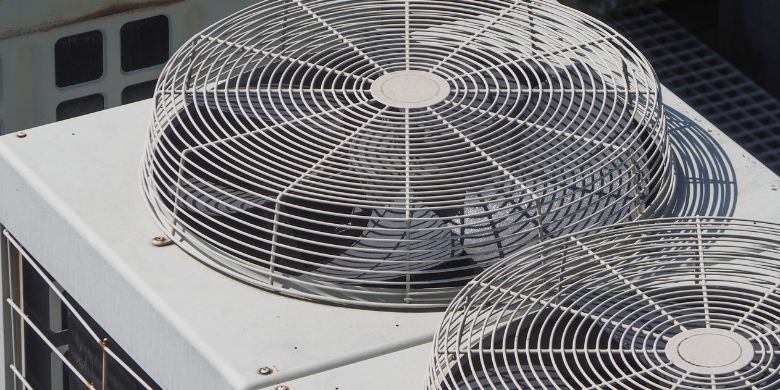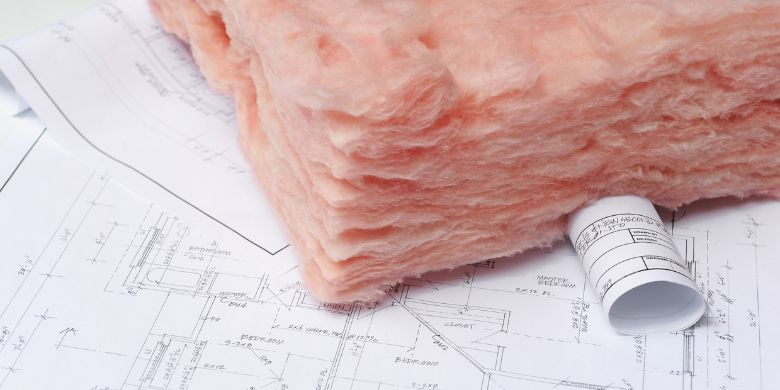Welcome to the fascinating world of construction specification, where every detail matters, and efficiency is the name of the game. In this blog post, we’ll focus on one of the most crucial aspects of modern building design: Division 23 of the Construction Specifications Institute (CSI) MasterFormat, which deals with Heating, Ventilating, and Air Conditioning (HVAC) systems.

You might be wondering, what exactly is the CSI MasterFormat, and why do HVAC systems deserve a spotlight? Worry not! We’ll cover everything you need to know, and by the end of this blog post, you’ll not only have a clear understanding of Division 23 but also appreciate the intricate details that make HVAC systems the backbone of a comfortable indoor environment. The CSI MasterFormat is an industry-standard classification system that provides a comprehensive list of divisions and sections for organizing detailed construction information. It’s the go-to resource for architects, engineers, contractors, and other stakeholders involved in design and construction projects. By following the MasterFormat, professionals can communicate more effectively, reducing the risk of errors, and ensuring projects are completed according to the highest industry standards.
Now, let’s talk about HVAC systems. These systems are crucial because they’re responsible for creating a comfortable indoor environment by regulating temperature, humidity, and air quality. In today’s energy-conscious world, HVAC systems have also become a key player in promoting energy efficiency and sustainability in the built environment. Rapid technological advancements and increasing environmental awareness have pushed the HVAC industry to develop more innovative, efficient, and user-friendly solutions, transforming Division 23 into an exciting and dynamic field.
We’ve got a lot to cover, so let’s dive straight into the heart of HVAC systems in Division 23. In this blog post, we’ll discuss:
- An overview of CSI Division 23 and the importance of HVAC systems in modern building design
- The key components and systems within Division 23
- HVAC design and specification considerations
- Technological advancements and trends shaping the future of HVAC systems
- Proper maintenance and troubleshooting of HVAC systems
- Conclusion and future perspectives on Division 23 HVAC systems
So, buckle up and get ready for an enlightening journey through the realm of construction specification and HVAC systems. Our goal is to make this blog post informative, and easy to understand, even for those who are new to the industry. Let’s get started!
Suggested Posts:
Introduction to CSI MasterFormat and Division 01
Getting to Grips with CSI Division 02 – Existing Conditions in Construction Projects
Mastering Division 09 – Finishes in the CSI MasterFormat System for Improved Project Success
Understanding CSI MasterFormat: Division 14- Conveying Equipment
Master the Art of Utilities Construction with CSI Division 33
Division 48 – A Comprehensive Guide to Electrical Power Generation in Construction
Introduction to CSI Division 23 — Heating Ventilating and Air Conditioning
Welcome to our deep dive into the world of HVAC systems! In this comprehensive guide, we will be exploring Division 23 of the Construction Specifications Institute (CSI) MasterFormat — Heating, Ventilating, and Air Conditioning.
CSI MasterFormat is a vital reference in the construction industry, providing a standardized classification system for organizing project manuals, detailed cost information, and other construction documentation. Among the numerous divisions, Division 23 is dedicated to HVAC systems, which are integral to modern building designs.
HVAC systems play a crucial role in maintaining a comfortable indoor environment, ensuring air quality, and promoting energy efficiency. In today’s world, where energy consumption is a significant concern, efficient HVAC systems have become a necessity. A well-designed HVAC system directly impacts the overall performance of buildings, from residential properties to commercial spaces, and even industrial facilities.

For a deeper understanding of Division 23, we will explore its key components and systems, design and specification considerations, recent technological advancements and trends, proper maintenance and troubleshooting, and the future perspectives of HVAC systems. By the end of this comprehensive guide, you will have a thorough understanding of the complexities and importance of Division 23 HVAC systems. So, let’s dive in and start exploring the fascinating world of HVAC!
Key Components and Systems within CSI Division 23
In this section, we will delve into the primary components and systems that make up Division 23, the Heating Ventilating and Air Conditioning (HVAC) division. Understanding these components will provide a comprehensive understanding of the capabilities and importance of HVAC systems.
Air Handling Units (AHUs)
An essential part of any HVAC system is the air handling unit (AHU), responsible for circulating conditioned air throughout a building. AHUs are typically made up of a fan, filters, heating, and cooling coils, and various controls. With their ability to maintain a comfortable indoor environment and regulate temperature and humidity, AHUs are a crucial element in Division 23.
Ductwork
Ductwork is the network of passages used to distribute conditioned air from the AHU to individual spaces within a building. It is designed to minimize air leakage, maintain proper insulation, and prevent condensation. Ductwork plays a vital role in efficient air distribution and energy conservation.

Piping
Pipes are used to transport heating or cooling fluids, like water or refrigerant, between the HVAC equipment and heat exchangers. The design and installation of piping in an HVAC system must consider factors like expansion, corrosion resistance, and insulation to ensure optimal performance.
Insulation
Proper insulation is crucial to maintaining energy efficiency and preventing energy loss. Insulating materials like fiberglass, foam, and mineral wool are used to cover ducts, pipes, and other components to reduce heat transfer and maintain consistent temperatures throughout the system.

Controls
Controls are essential in managing the operation of HVAC systems by regulating temperatures, humidity, airflow, and energy consumption. Thermostats, sensors, and building automation systems can be used to monitor and adjust the performance of the HVAC system, making it more efficient and user-friendly.
Accessories
Various accessories like dampers, grilles, diffusers, and registers are used in Division 23 HVAC systems to control and distribute airflow. These components should be properly selected and installed to ensure the optimal performance of the HVAC system and to maintain indoor air quality.
In conclusion, understanding the key components and systems within CSI Division 23 is essential for designers, contractors, and building owners to make informed decisions about HVAC solutions. By familiarizing oneself with these elements, the result will be a more comfortable, energy-efficient, and healthy indoor environment.
HVAC Design and Specification Considerations
When it comes to Division 23 – Heating Ventilating and Air Conditioning (HVAC), there are a number of crucial design and specification factors that must be considered. In this section, we will delve into key aspects such as thermal comfort, indoor air quality, energy efficiency, system sizing, and equipment selection. Additionally, we will discuss the essential role of building codes, industry standards, and best practices in guiding HVAC design and specifications.
Thermal Comfort
One of the primary goals of HVAC systems is to provide a comfortable indoor environment for occupants. This can be achieved through the careful consideration of thermal comfort, which is influenced by factors like air temperature, humidity, air movement, and individual preferences. To design an efficient HVAC system, it is essential to understand and accommodate these factors, ensuring that the space reaches the desired level of comfort.
Indoor Air Quality
Improving indoor air quality (IAQ) is another vital aspect of HVAC design. A well-designed system should effectively remove contaminants and pollutants, control humidity, and provide adequate ventilation. This is particularly important in commercial spaces where occupants may be exposed to harmful chemicals or particulate matter. To maintain a healthy indoor environment, engineers must consider filtration, air purification, and proper ventilation design.

Energy Efficiency
With increasing energy costs and a greater emphasis on sustainability, energy efficiency has become a top priority in HVAC design. This can be achieved through selecting high-efficiency equipment, optimizing system design, and integrating advanced control strategies. Utilizing energy modeling tools and following industry standards like ASHRAE and LEED can aid in designing energy-efficient HVAC systems.
System Sizing and Equipment Selection
A critical step in the design process is determining the appropriate system sizing and equipment selection. Proper sizing ensures the HVAC system operates efficiently, providing optimal performance and preventing issues like short-cycling or insufficient capacity. Using established methods such as ACCA’s Manual J for residential projects or ASHRAE guidelines for commercial applications can help in accurately sizing a system. Equipment selection should be based on factors including efficiency ratings, reliability, and compatibility with the overall system design.
Building Codes, Industry Standards, and Best Practices
Lastly, HVAC design and specifications must adhere to relevant building codes, industry standards, and best practices. These guidelines ensure the safety, comfort, and efficiency of the system while complying with local and national regulations. Engaging with industry organizations like ASHRAE, ACCA, and SMACNA can provide invaluable resources and insights into the most current standards and practices.
In conclusion, a well-designed HVAC system plays a pivotal role in the overall performance and comfort of a building. By understanding and addressing key design and specification considerations, engineers can develop efficient systems that fulfill the needs and expectations of building occupants while adhering to industry standards and best practices.

Technological Advancements and Trends in HVAC Systems
In recent years, the HVAC industry has undergone significant transformations, thanks to a myriad of technological advancements and emerging trends that have revolutionized the way systems are designed, installed, and operated. As a construction specification expert, it’s essential to stay abreast of these exciting developments to ensure that your projects are not only compliant with the latest standards and best practices but also equipped with cutting-edge solutions that enhance efficiency, cost-effectiveness, and user satisfaction. In this section, we’ll delve into some of these game-changing innovations and their impact on CSI Division 23.
Smart Thermostats and Controls
One of the most notable advancements in HVAC technology is the introduction of smart thermostats and controls. These devices enable improved temperature regulation, optimize energy consumption, and provide remote access and control for end-users. This increased convenience and adaptability, coupled with the potential for significant energy savings, make smart thermostats a must-have in modern HVAC systems.

Variable Refrigerant Flow (VRF) Technology
Variable Refrigerant Flow (VRF) technology has become increasingly popular in commercial and residential HVAC systems due to its ability to provide better comfort control, energy efficiency, and adaptability. VRF systems use variable-speed compressors to modulate refrigerant flow, allowing for precise temperature control and simultaneous heating and cooling across different zones. These features enable HVAC professionals to design and specify systems that closely align with occupants’ needs and preferences, resulting in enhanced comfort and reduced energy consumption.
Energy Recovery Ventilators
Energy recovery from exhaust air to pre-condition incoming fresh air is another trend that has gained traction in the HVAC industry. Energy Recovery Ventilators (ERVs) optimize energy efficiency by transferring heat, and sometimes humidity, between the incoming fresh air and outgoing exhaust air streams. By doing so, ERVs minimize the energy required for heating or cooling the fresh air and contribute to the overall sustainability of the building.
Sustainable Materials and Practices
With the increased focus on energy conservation and environmental sustainability, there has been a growing demand for eco-friendly materials, equipment, and practices in HVAC systems. Examples include using low global warming potential (GWP) refrigerants, incorporating green building certifications like LEED, and exploring renewable energy sources, such as solar power. Incorporating these sustainable elements can help your projects meet regulatory requirements and appeal to environmentally-conscious clients.
In summary, staying current with technological advancements and trends in HVAC systems is crucial for construction specification experts. By integrating innovations like smart thermostats, VRF technology, energy recovery, and sustainable practices into your Division 23 projects, you can position yourself at the forefront of the industry and ensure your clients receive the most efficient, cost-effective, and user-friendly solutions available.
Proper Maintenance and Troubleshooting of HVAC Systems
Proper maintenance of HVAC systems under Division 23 is critical in ensuring longevity, optimal performance, and energy efficiency. In this section, we’ll discuss the importance of regular maintenance, common issues, and best practices for troubleshooting HVAC systems. Let’s dive in and explore what it takes to keep these vital systems running smoothly.
The Significance of Routine Maintenance
Routine maintenance of HVAC systems is essential for a variety of reasons. By performing regular inspections and cleaning, you can prevent potential problems, reduce wear and tear on components, and maximize energy efficiency. Additionally, scheduled maintenance can increase the lifespan of your HVAC system, saving you money on replacements and repairs in the long run.
Key Maintenance Tasks Include:
- Air filter replacement: Dirty or clogged air filters can restrict airflow and reduce system efficiency. Replace filters regularly, according to the manufacturer’s recommendations.
- Ductwork inspection and cleaning: Regularly inspect your ductwork for leaks, damage, or debris buildup. Clean ducts as needed to ensure optimal airflow and maintain indoor air quality.
- Coil cleaning: Keep both evaporator and condenser coils clean, as dirty coils can reduce energy efficiency and system performance.
- Lubrication: Lubricate motors and bearings to minimize friction and prevent premature wear.
- Thermostat calibration: Ensure the thermostat is accurately controlling the temperature to prevent unnecessary energy use.

Identifying and Troubleshooting Common HVAC Issues
Diagnosing and troubleshooting HVAC problems can be challenging, but being aware of common issues can help you quickly identify and resolve them.
Some Common HVAC Issues Include:
- Inadequate cooling or heating: Check for clogged filters, blocked registers, or thermostat issues. If these aren’t the cause, consult a professional to assess any potential mechanical problems.
- Unusual noises: Rattling, buzzing, or squealing sounds may indicate loose or damaged parts, debris, or a fan motor issue. Determine the source of the noise and address the issue accordingly.
- Leaks: Water or refrigerant leaks may occur due to a clogged condensate drain or damaged refrigerant lines. Make sure to address leaks promptly to prevent damage and inefficiency.
- Tripping circuit breakers: If your HVAC unit is repeatedly tripping the breaker, this may indicate an electrical problem. Consult a professional for further evaluation.
Tips for Optimal Performance and Energy Efficiency
To maintain the efficiency and performance of your HVAC system, follow these best practices:
- Schedule regular maintenance: Work with a professional service provider to establish a maintenance schedule tailored to the needs of your specific HVAC system.
- Monitor energy usage: Use energy monitoring tools to analyze performance trends and identify areas for improvement.
- Upgrade outdated equipment: Invest in energy-efficient equipment and technologies, such as smart thermostats and variable refrigerant flow systems.
In conclusion, proper maintenance and troubleshooting are crucial in maintaining a reliable and efficient Division 23 HVAC system. By following the aforementioned tips and best practices, you can ensure optimal performance, energy efficiency, and an extended lifespan for your HVAC system.
Have Questions?
Get in touch with our team to learn more about what Swiftlane can do for you.




